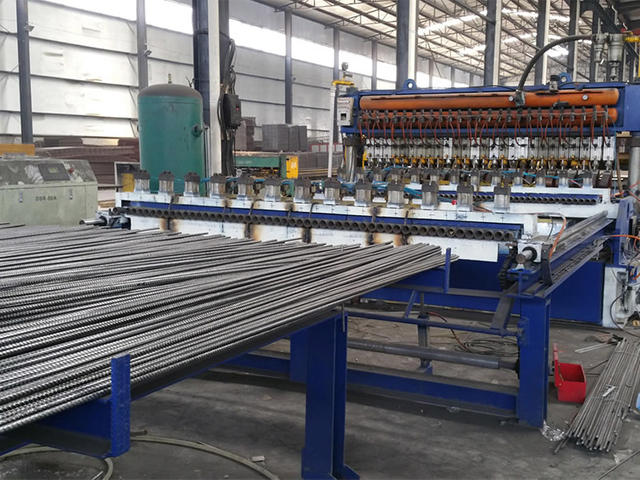Aug . 07, 2024 08:35 Back to list
Custom Galvanized Welded Wire Mesh for Diverse Applications with ISO Certification for Quality Assurance
Understanding OEM Galvanized Welded Wire Mesh with ISO Standards
In the realm of construction and industrial applications, the use of welded wire mesh has become increasingly prevalent due to its versatility and strength. One of the most reliable types of welded wire mesh is the OEM (Original Equipment Manufacturer) galvanized variety, which is often produced in compliance with ISO (International Organization for Standardization) standards. This combination of OEM, galvanization, and adherence to ISO standards ensures a high-quality product suitable for various applications.
The Significance of OEM in Wire Mesh Production
OEM refers to companies that manufacture products based on the specifications provided by other businesses. In the case of galvanized welded wire mesh, OEM manufacturers work closely with clients to create customized mesh products that meet specific project requirements, ensuring that the wire mesh is tailored for particular uses. This includes variations in wire gauge, mesh size, and coating thickness, allowing for a range of applications from agricultural fencing to industrial shelving.
The advantage of choosing OEM galvanized welded wire mesh lies in the customized solutions provided. Businesses can specify their needs and collaborate with manufacturers to achieve the desired outcome, which greatly enhances the functionality and effectiveness of the mesh in targeted applications.
Galvanization A Key Feature
Galvanization is a critical process in the production of welded wire mesh. This technique involves coating the steel wire with a layer of zinc to protect it from rust and corrosion, significantly extending the lifespan of the wire mesh. The galvanized coating acts as a sacrificial barrier, preventing environmental elements such as moisture and oxygen from reaching the steel underneath, thereby reducing the likelihood of deterioration.
oem galvanized welded wire mesh iso

There are two primary methods of galvanization hot-dip galvanization and electro-galvanization. Hot-dip galvanization involves submerging the welded wire mesh in molten zinc, resulting in a thicker, more durable coating. Electro-galvanization, on the other hand, involves using an electric current to apply a thinner coating of zinc. The choice between these methods depends on the intended application and the required level of corrosion resistance.
The Role of ISO Standards
The International Organization for Standardization (ISO) plays a pivotal role in ensuring that products meet specific quality benchmarks. For galvanized welded wire mesh, adhering to ISO standards means that the product has been manufactured under stringent quality control processes, ensuring durability, reliability, and safety. ISO certification helps manufacturers demonstrate their commitment to high-quality production, which is crucial in industries where structural integrity is paramount.
ISO standards for wire mesh typically relate to aspects such as mechanical properties, chemical composition, and the uniformity of the galvanization process. By ensuring compliance with these standards, manufacturers can provide confidence to their clients, knowing that the products they use meet internationally recognized quality criteria.
Applications of OEM Galvanized Welded Wire Mesh
The applications of OEM galvanized welded wire mesh are vast and varied. In agriculture, it is often used for fencing livestock, protecting crops, and building trellises. In construction, it serves as reinforcement for concrete and as protective barriers. Furthermore, its strength and durability make it suitable for industrial applications, including storage solutions and security fencing.
In conclusion, OEM galvanized welded wire mesh that adheres to ISO standards represents a high-quality solution for diverse applications. Its customization ability, inherent corrosion resistance, and compliance with international quality benchmarks make it an ideal choice for businesses seeking reliable and durable wire mesh solutions. As industries continue to evolve, the demand for such products is likely to grow, paving the way for innovative applications and advancements in welded wire mesh technology.
-
Chain Link Fence-Anping County Puersen Hardware Wire Mesh Co., Ltd.|Durable Security&Versatile Applications
NewsAug.18,2025
-
Glass Food Storage Jar with Screw Wooden Lid - Anping County Puersen|Heat-Resistant & BPA Free
NewsAug.18,2025
-
Glass Food Storage Jar with Screw Wooden Lid - Anping County Puersen Hardware Wire Mesh Products Co., Ltd
NewsAug.18,2025
-
Glass Food Storage Jar with Screw Wooden Lid - Anping County Puersen Hardware Wire Mesh Products Co., Ltd|Eco-friendly Durable Storage
NewsAug.18,2025
-
Welded Wire Mesh for Industry | Factory Direct Supplies
NewsAug.18,2025
-
Glass Food Storage Jar with Screw Wooden Lid - Anping County Puersen Hardware Wire Mesh Products Co.,Ltd|Eco-Friendly, Heat-Resistant, Durable
NewsAug.17,2025

